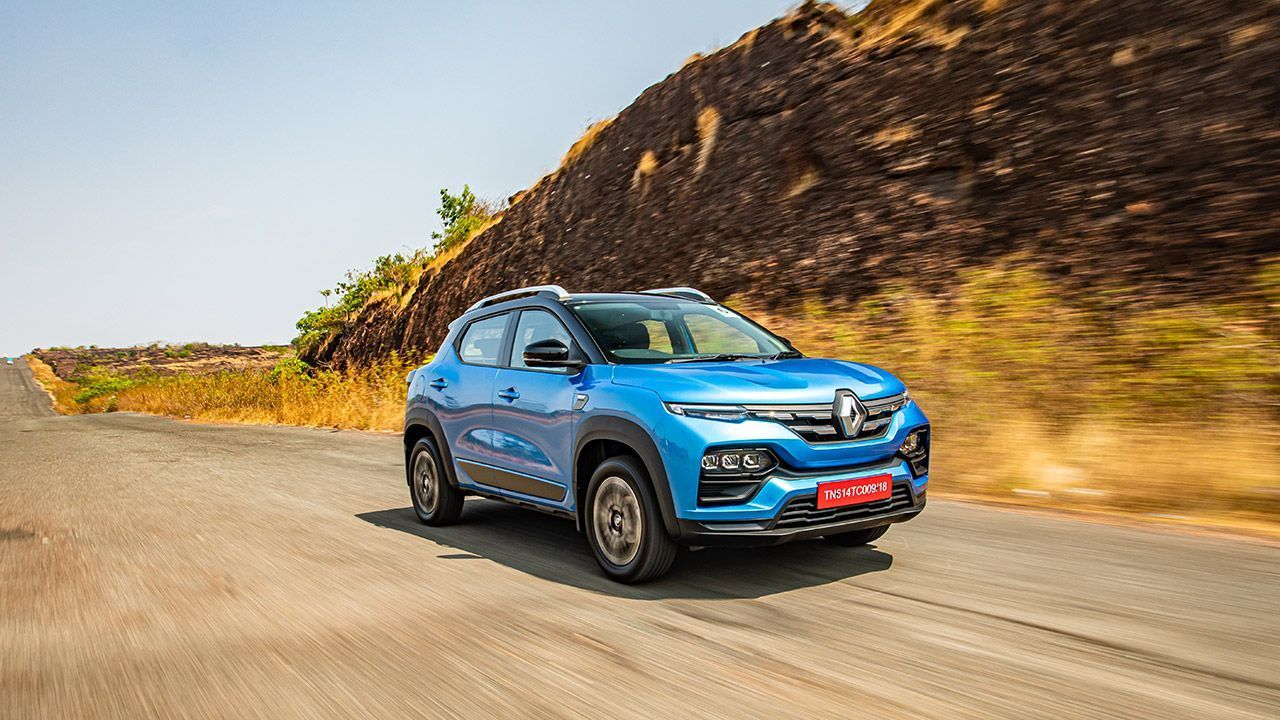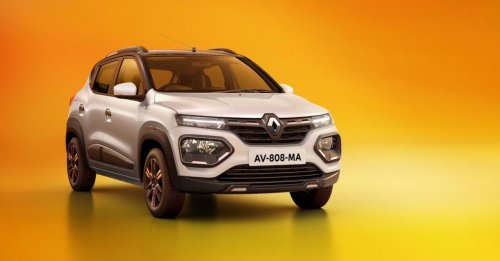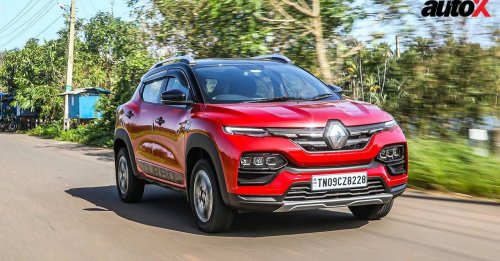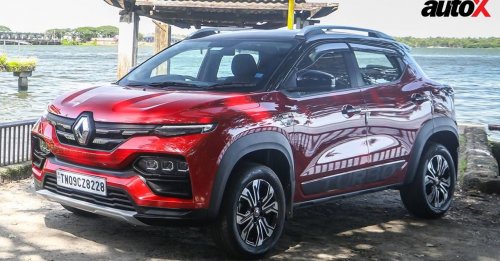
Renault has tasted significant success in the sub-4 metre segment with the Triber. Now, can it repeat the same in the incredibly competitive sub-4 metre SUV space with the Kiger?
When I first tested the Triber, I was surprised by what it has to offer to the Indian customer. A couple of things stood out prominently – first, the Triber’s design completely disguised the fact that it measured just under 4 metres, and second, it screamed premium – something that has served it well in the Indian market.
It seems fair to say that Renault has mastered the art of getting a product’s design right and, more importantly, making it look more premium than its price suggests. But does the first sub-4 metre SUV from the French brand possess the same traits? And even if it does, would it be enough to succeed in the highly competitive sub-4 metre SUV segment? Well, we drove the new Kiger to find exactly that.

Bit of a mouthful
I think perhaps the most confusing aspect of Renault’s latest product is its name, or rather the pronunciation of the Kiger name. I’ve already heard various iterations of it and still can’t figure out whether it’s 'Keeger’ or ‘Kaaiger’. But jokes aside, one look at the however-you-want-to-pronounce-it SUV, and you can see that Renault’s premium design DNA is intact in the Kiger.
Sure, it’s not designed like a run-of-the-mill butch SUV, but its design seems to be somewhere between a tall hatchback and a crossover. Both front and rear ends of the Kiger feature striking design cues, such as an oversized Renault logo on the front grille and a layered headlight setup, which also features dramatic-looking triple-barrel LED headlights – that come as standard on the top-of-the-line RXZ variant that we tested.
The restrained use of chrome in its design is also a highlight in my book. It looks quite balanced, thanks to its flared wheel arches and 16-inch wheels. There are three aspects of the Kiger that I really like. First, the availability of vivid colours – the Caspian blue shade of our test car makes sure that it stands out on the road. Second, the availability of a dual-tone contrast roof on all variants, which will also encourage customers to personalise their cars. And third, its C-shaped LED taillights, which are absolutely stunning to look at and remain a high point of its design. Overall, the Kiger is yet another stunning looking product from Renault. And while it might not fit the traditional SUV design mould, it certainly looks like a million bucks.
Small size, big space
Now, one of the biggest highlights of the Triber was its space management – it offered 3 rows of usable seating in such a compact footprint. And it seems that Renault has done it again – despite being under 4 metres in size, the Kiger has a very spacious interior. While the front seats are quite spacious and offer good bolster support, it’s the rear seat that takes the space game to the next level. Not only does it offer enough headroom and legroom to fit people taller than 6-feet but also enough space to even fit three adults. Similarly, at 405 litres, the boot space of the Kiger also adds to its practicality. Also, there are multiple cubbies to store your belongings, the biggest of which is a huge console underneath the front armrest.
Equipped to the gills
Given its value pricing, I would say that the interior quality and fit-and-finish of the Kiger is largely quite acceptable. Sure, some surfaces could do with better attention to detail, such as the door handles and interior rear-view mirror, which feel quite cheap and flimsy. However, most of the surfaces and elements work well and are quite practical.
The list of standard equipment offered with the Kiger is also quite big. There is an 8.0-inch touchscreen multimedia system, paired with a 7.0-inch digital instrument console. The instrument console particularly stands out with its design layout and slick typography, which is not just legible but also looks great. I particularly liked the analogue-style speedometer, which looks fantastic and makes you wonder why other brands try to reinvent the wheel by designing digital gauges in obscure shapes, making them difficult to read. The touchscreen placement is a disappointment, though, because it’s very difficult to read any information on the screen in sunlight – it’s something that Renault must look into.
The Kiger also fares well in terms of safety, as base variants of the car feature dual airbags and ABS, while the premium variants come with four airbags. Additionally, the Kiger also comes with five optional trim packs, which customers can use to personalise their car not only visually but also in terms of features, for instance by going for the Smart+ pack, which includes a wireless charger and an air purifier. Also, the air-conditioning system of the Kiger is amazingly effective – even at a scorching temperature of 39 degrees at our test location, it froze the cabin within a few minutes.
Turbo power
Powering the Triber is the same 1.0-litre petrol engine that we have seen in other products in the Renault line-up. It’s available in two variants – 99bhp turbo and 71bhp in naturally aspirated trim. Our test car featured the turbo powerplant, which seems quite sufficient for the Kiger, with its 99bhp and 160Nm of torque.
In terms of power delivery, though, you really have to wring the neck of the engine, as the peak torque arrives at 2,800rpm, which means that below the 2,500rpm mark, there is quite a bit of turbo lag. However, once you cross the 2,500rpm mark, the Kiger really picks up the pace and is very responsive to throttle inputs. In fact, once over the turbo lag, the engine really comes into its element and maintains three-digit speeds quite easily. But, given that the engine is a 3-cylinder unit, the high NVH levels and lack of refinement at high revs are quite evident.
In terms of ride and handling, the Kiger shines – like all other Renault products, its ride-and-handling balance is very good. The Kiger remains stable at high speeds and handles broken roads effectively – it virtually glides over them. The electrically-assisted steering, though, needs work and can get excessively weighed around fast corners, however, for city driving, it works fine.
Good package, but with limitations
The Kiger has a lot of good things going for it – a fantastic design, bright colours, practically spacious interior, and high levels of standard equipment. But it does have some room for improvement, for instance, the 3-cylinder engine’s NVH levels need some work and a few areas, like the inside rear-view mirror and door handles, can do with better quality.
But what I find quite disappointing is the lack of a dead pedal or even enough space to rest your left foot next to the clutch. When you have to frequently use the clutch, for instance in start-stop traffic, it can be a real bother.
However, at an ex-showroom price of ₹8.55 lakh (for the RXZ variant that we tested), you get a lot of product, considering its space, practicality, design, and standard equipment. And the fact that its prices start from ₹5.45 lakh means that the Kiger competes not only with other sub-4 metre SUVs but also with most of the popular hatchbacks. And at its price, it really offers a worthy alternative to both hatches and SUVs.
- Renault Kiger RXZ
Engine: 999cc / 3-Cylinder / Turbocharged
Fuel: Petrol
Transmission: 5-Speed Manual / Front-Wheel Drive
Power: 99bhp @ 5,000rpm
Torque: 160Nm @ 2,800 – 3,600rpm
Price: ₹8.55 Lakh (Ex-showroom)
X-Factor: With a combination of design, features, and space, the Kiger offers a fantastic package, especially if you’re on a tight budget.
| Pros • Great design • Phenomenal space | Cons |
Read more:
Renault Kiger key highlights: Price, variants, engine options, rivals & more



![Renault Kiger [2022-2023] Renault Kiger [2022-2023] Model Image](https://static.autox.com/uploads/cars/2022/04/renault-kiger.jpg)

















1 Comment
Renault Kiger i am using for the last 36 days and drove 1200 kms and have worst experience with performance and multiple repairs. Looks like i bought a used car from the showroom
Reply